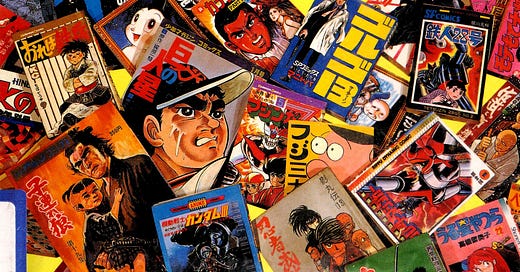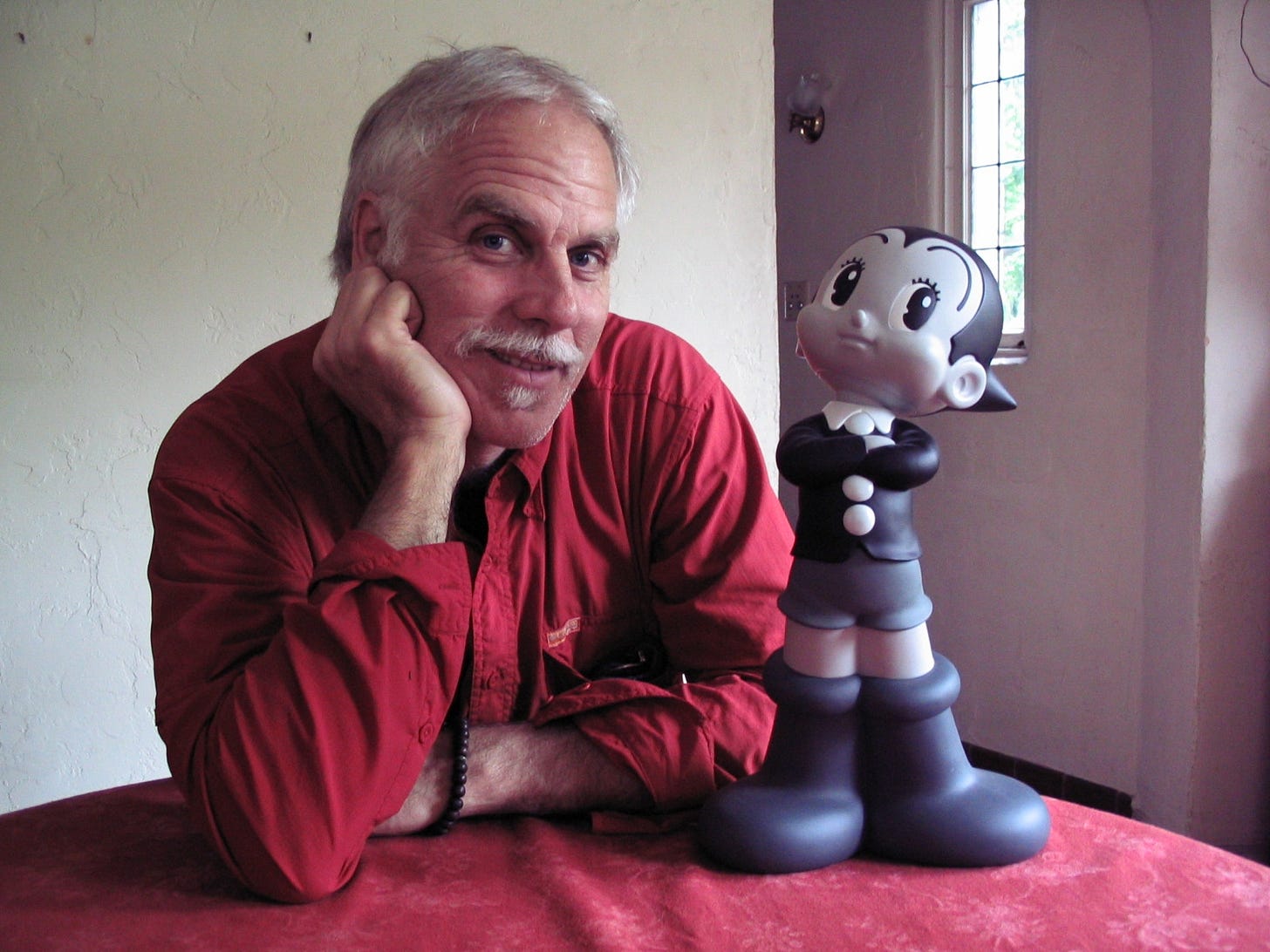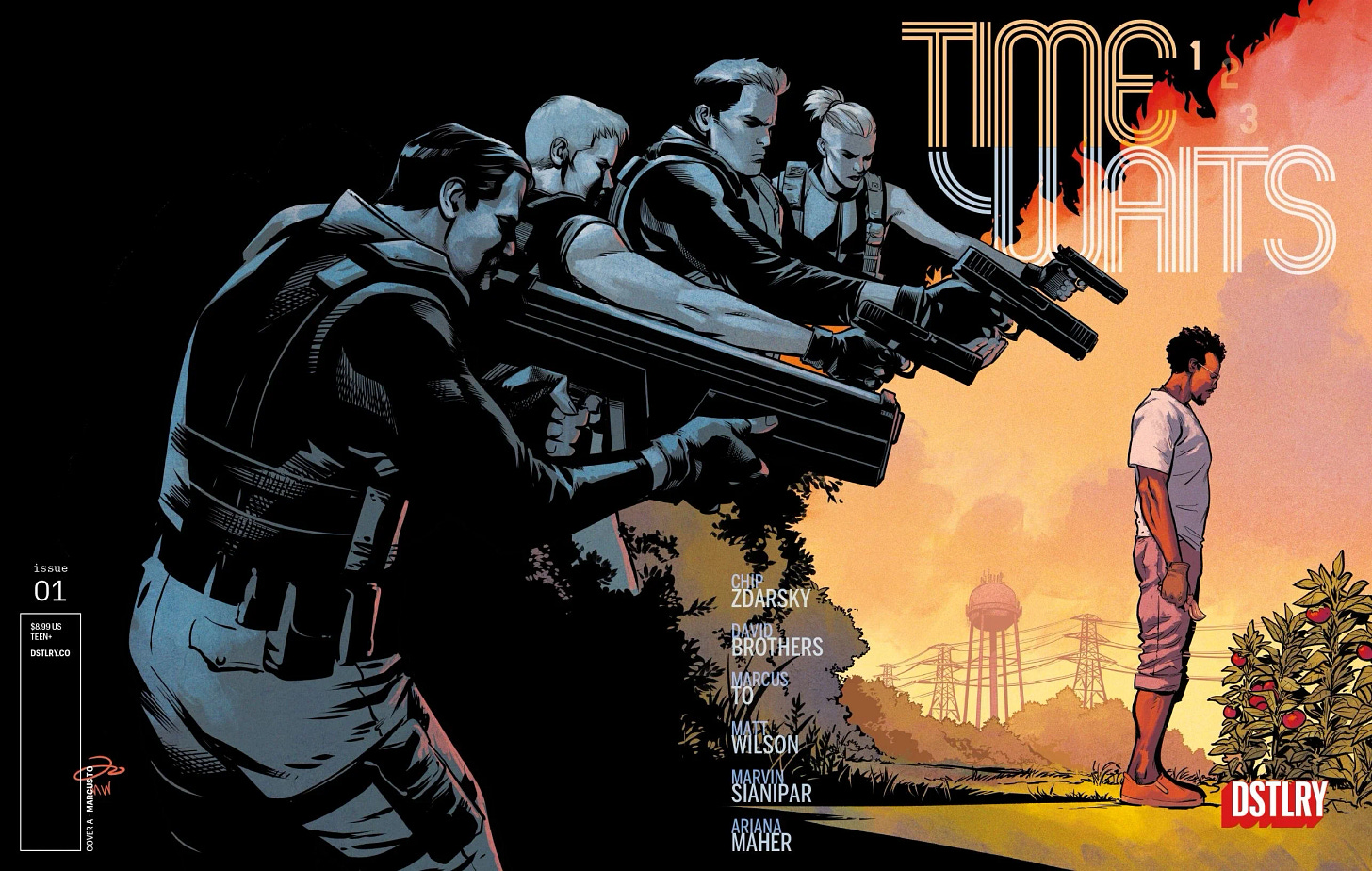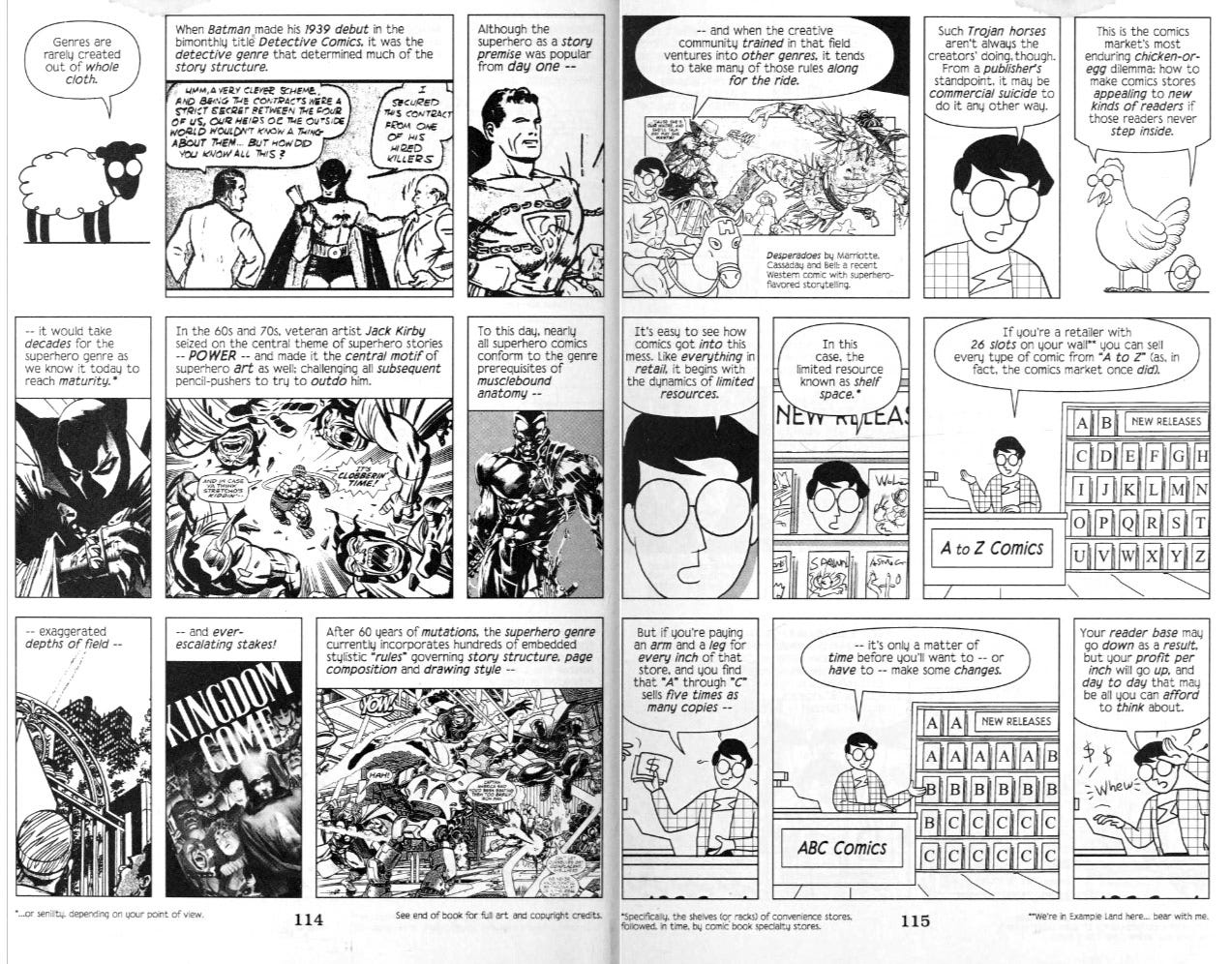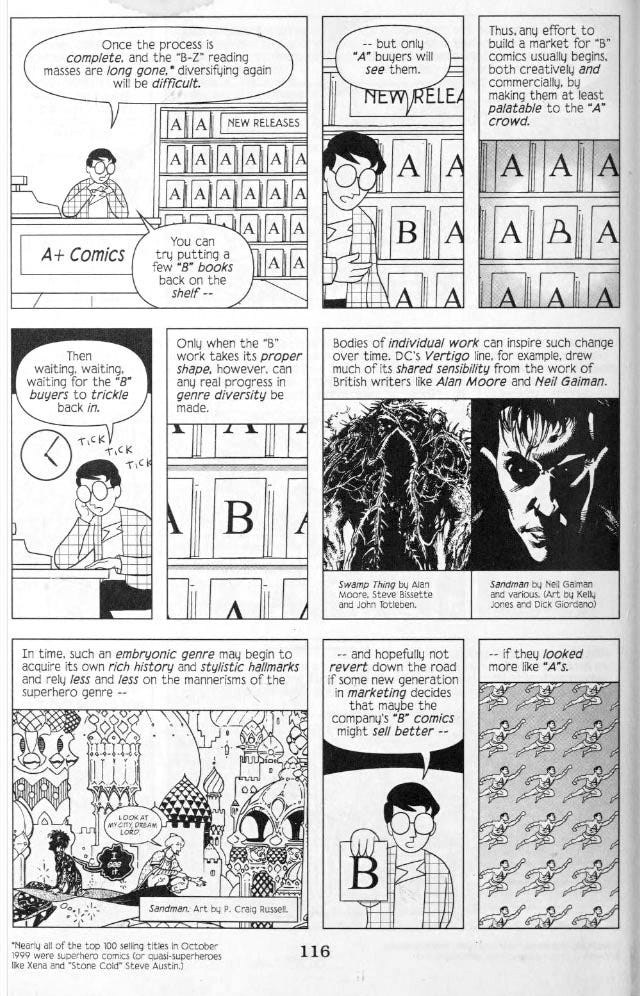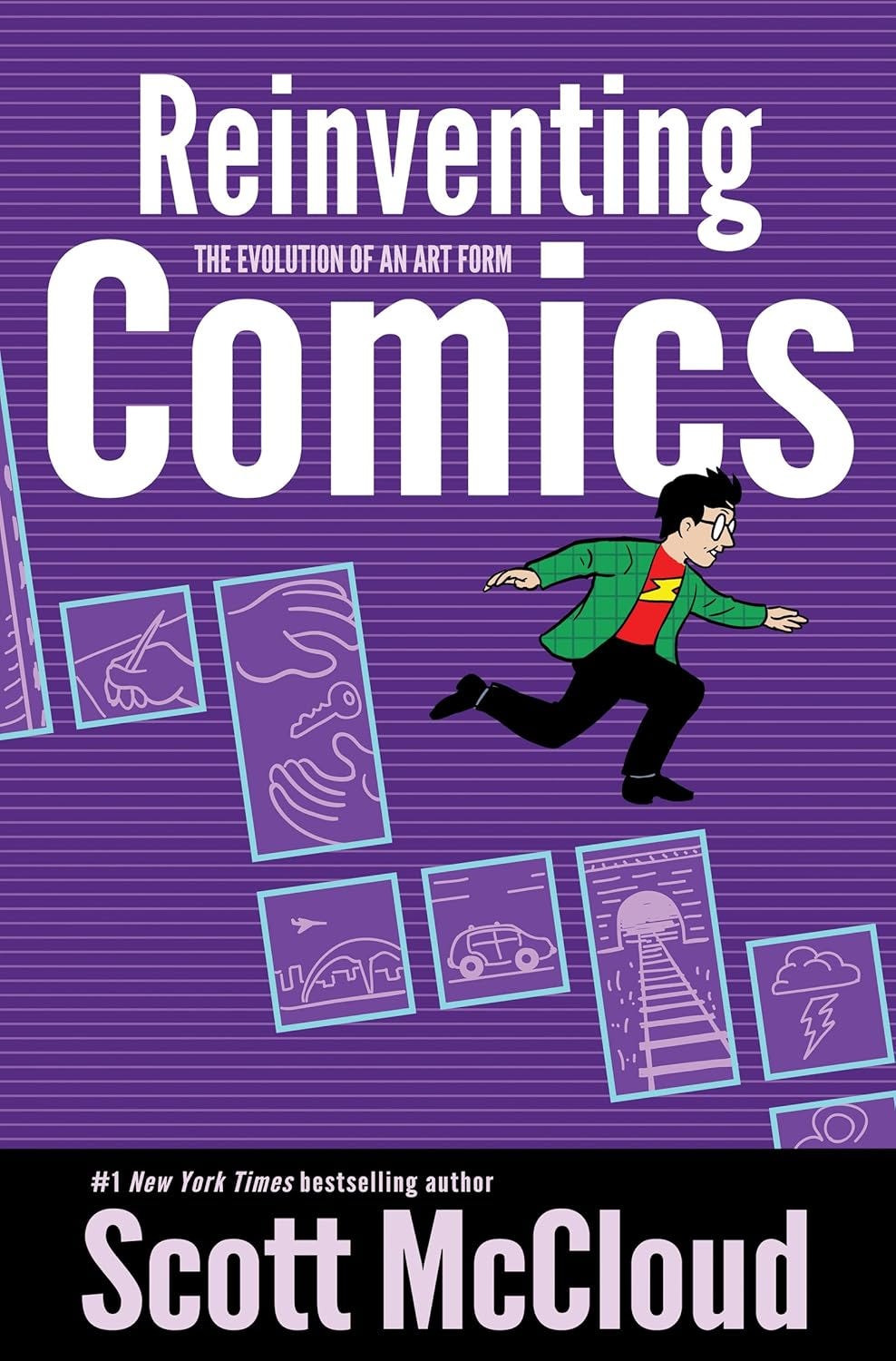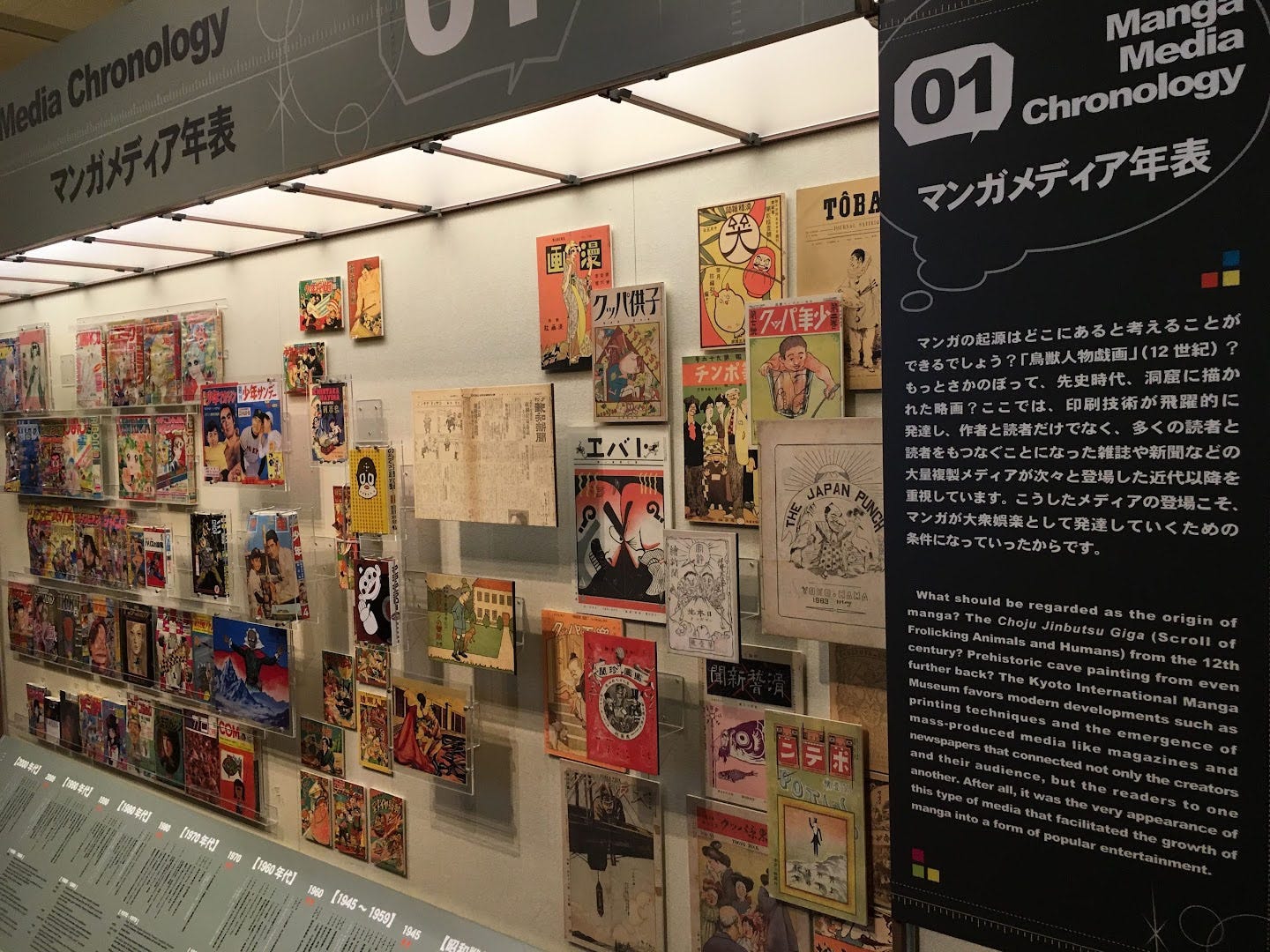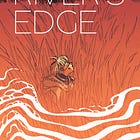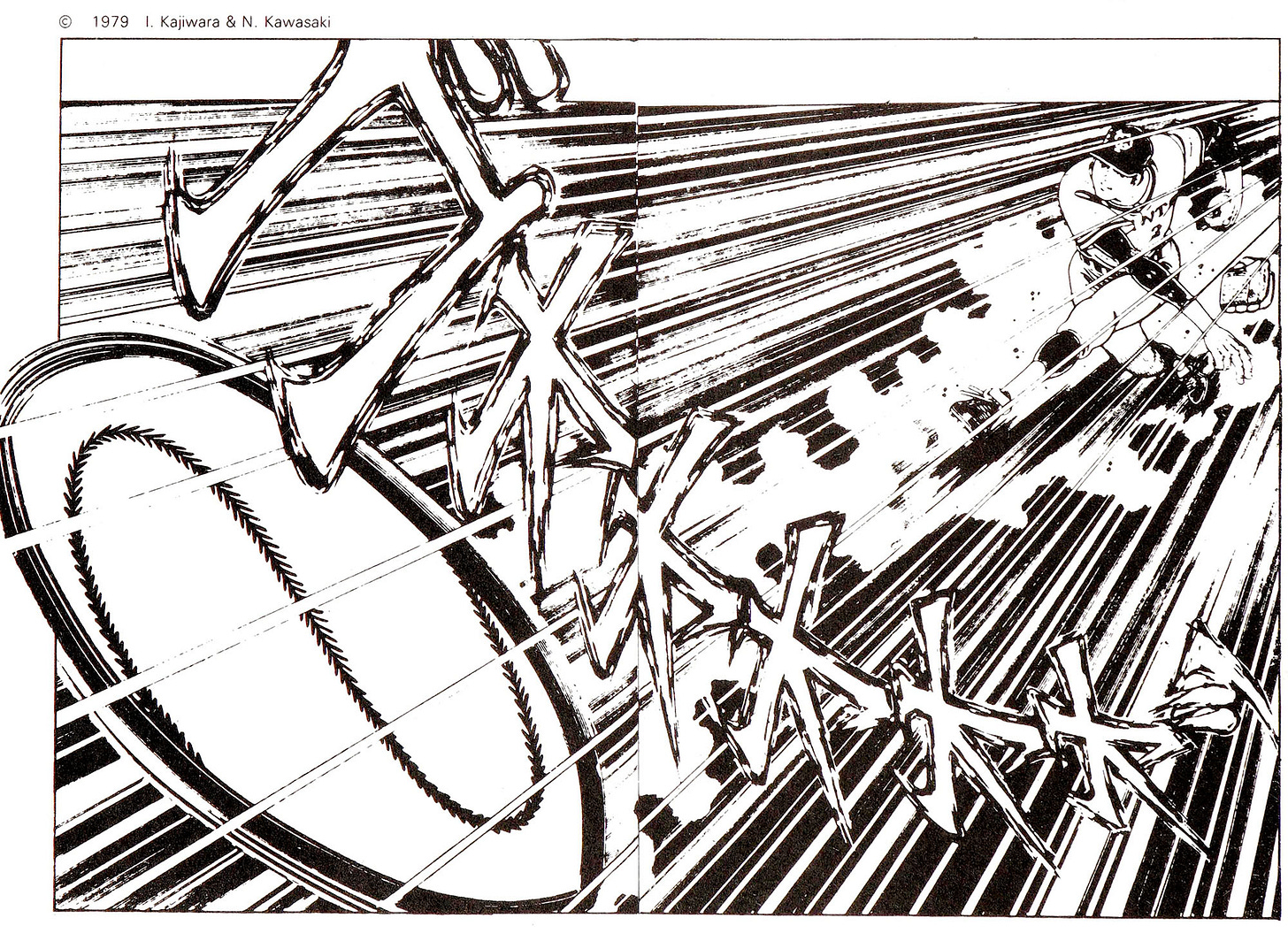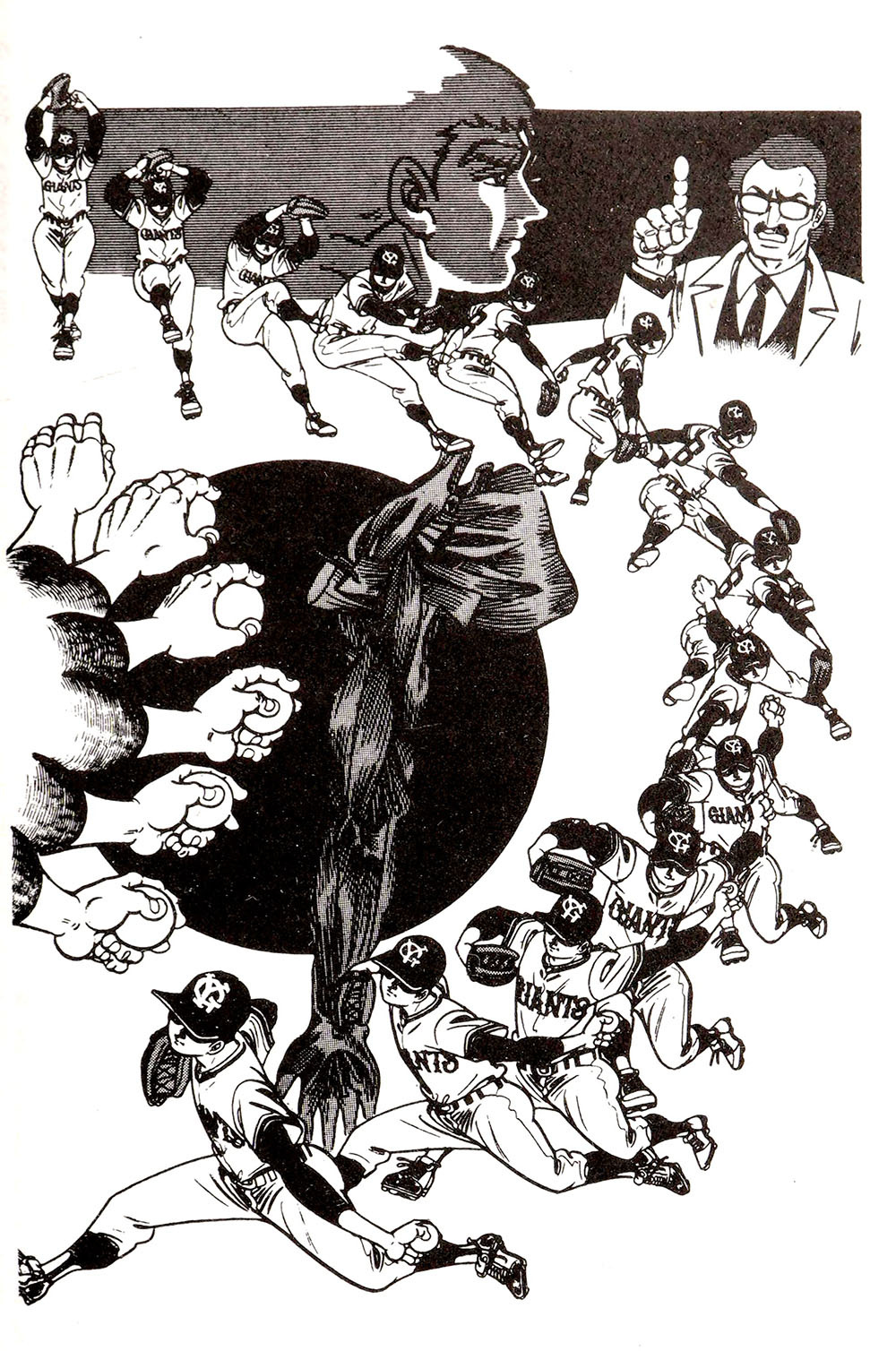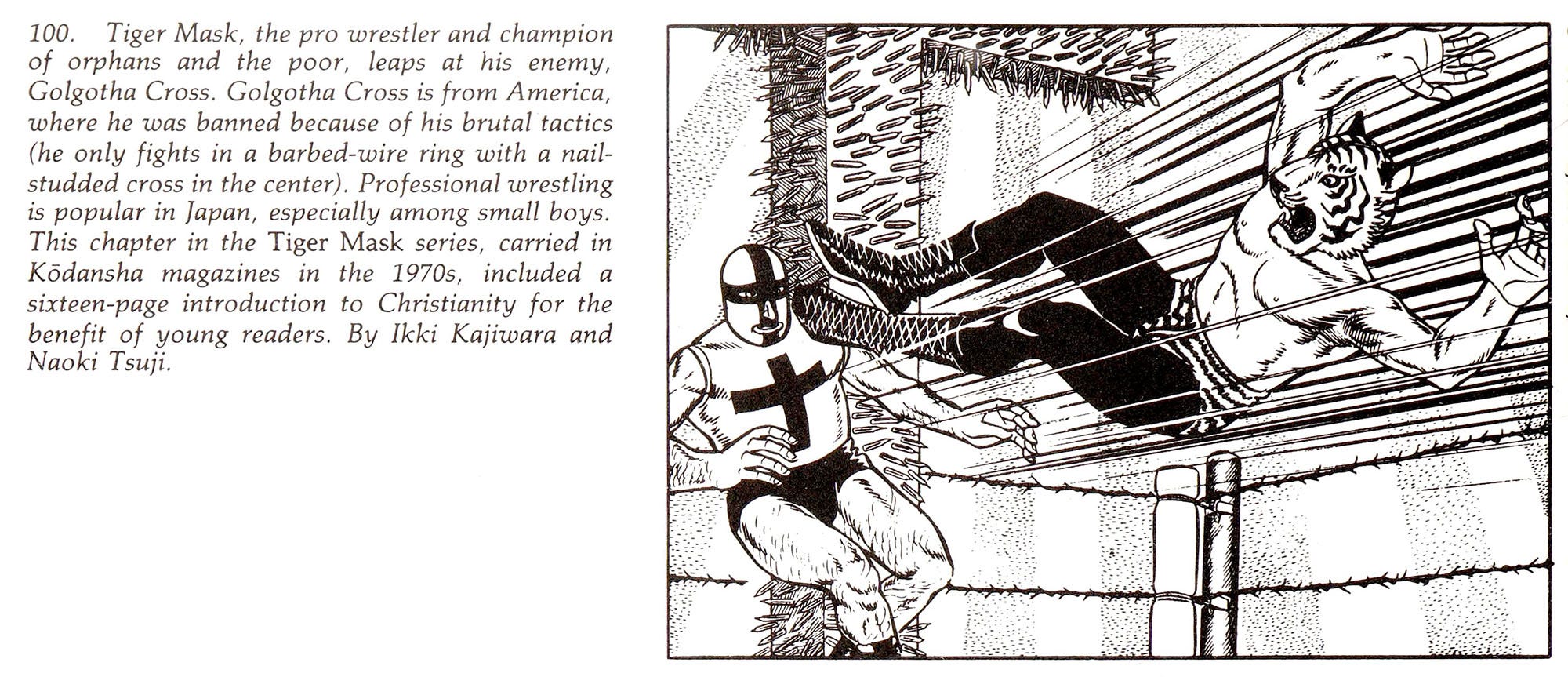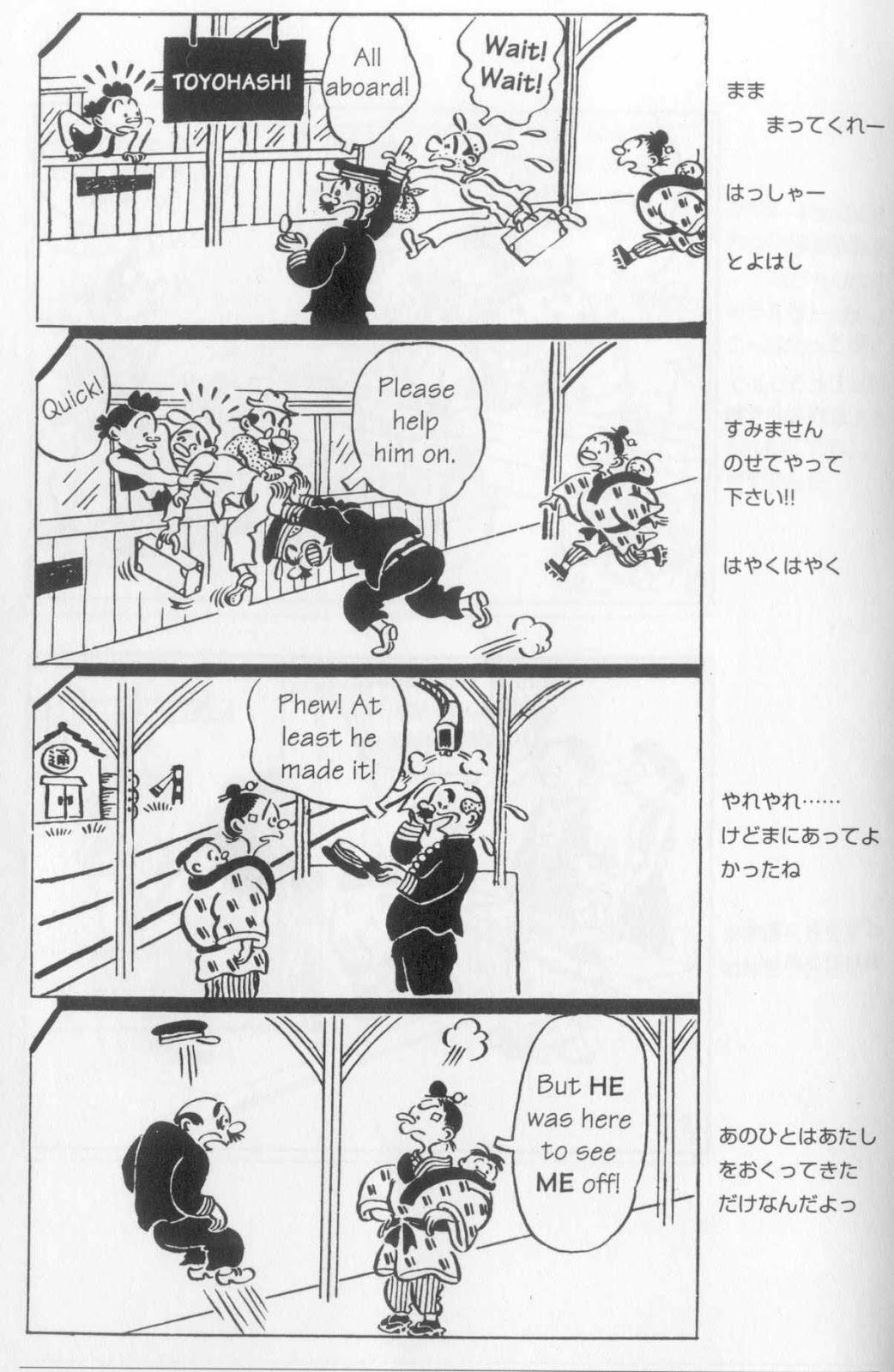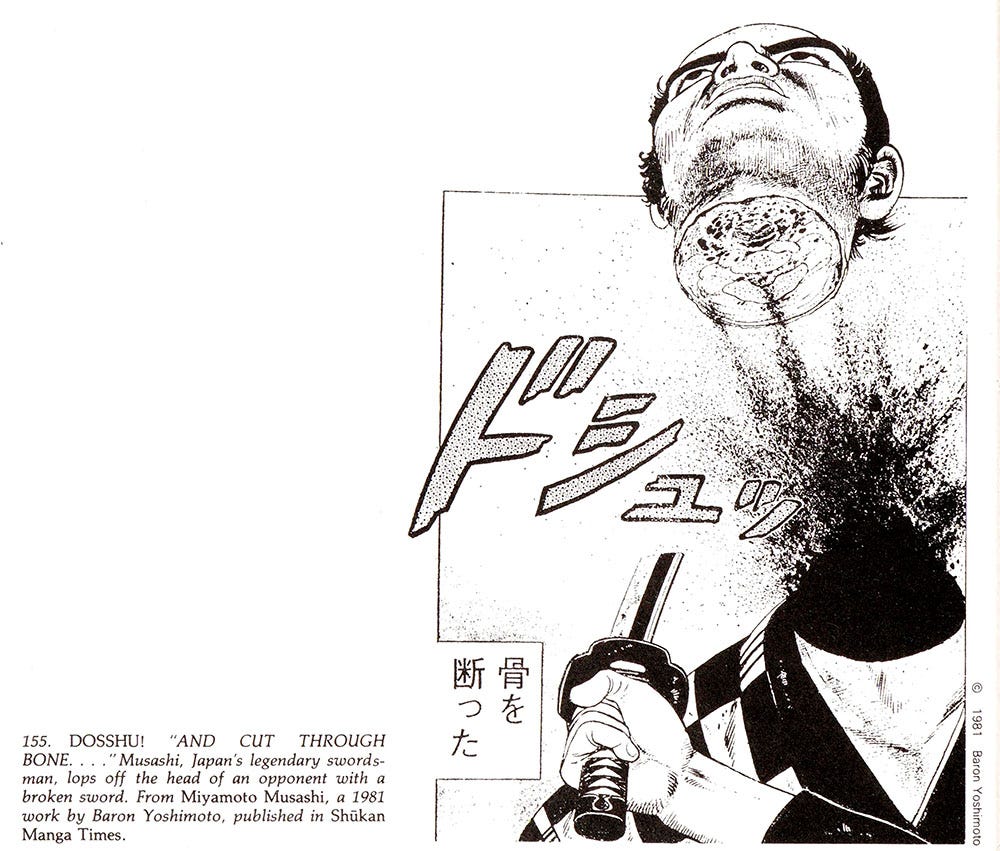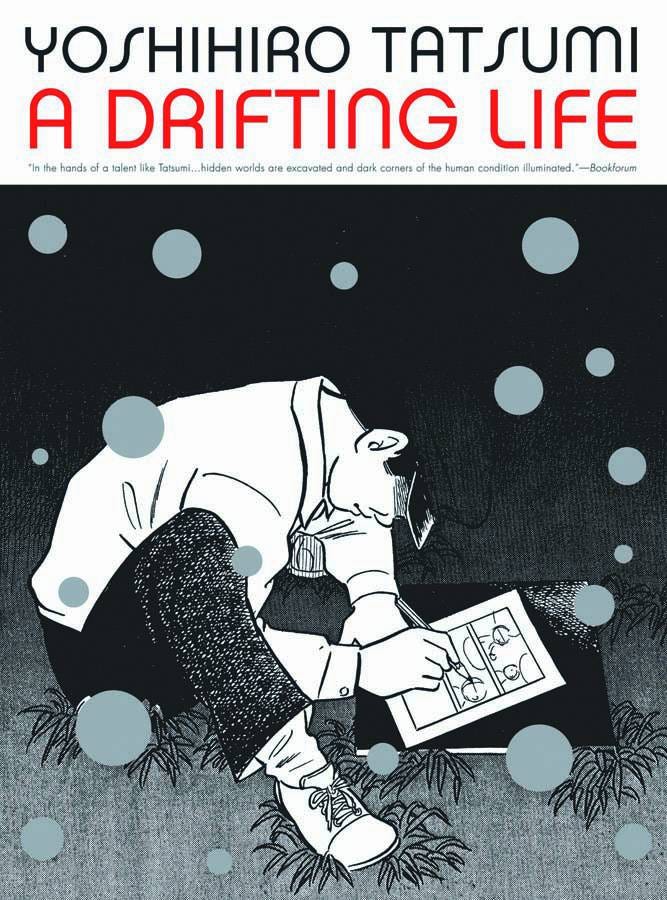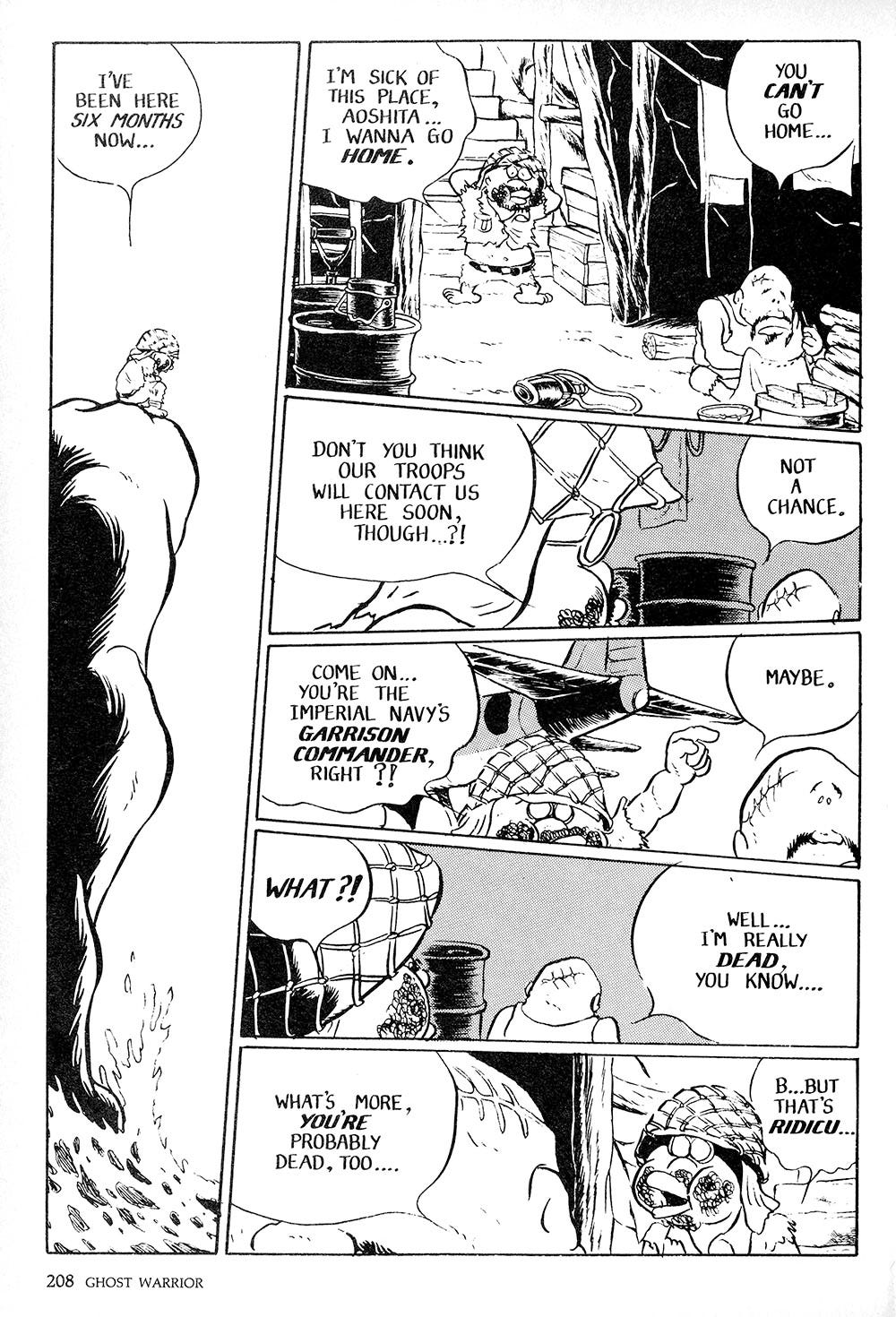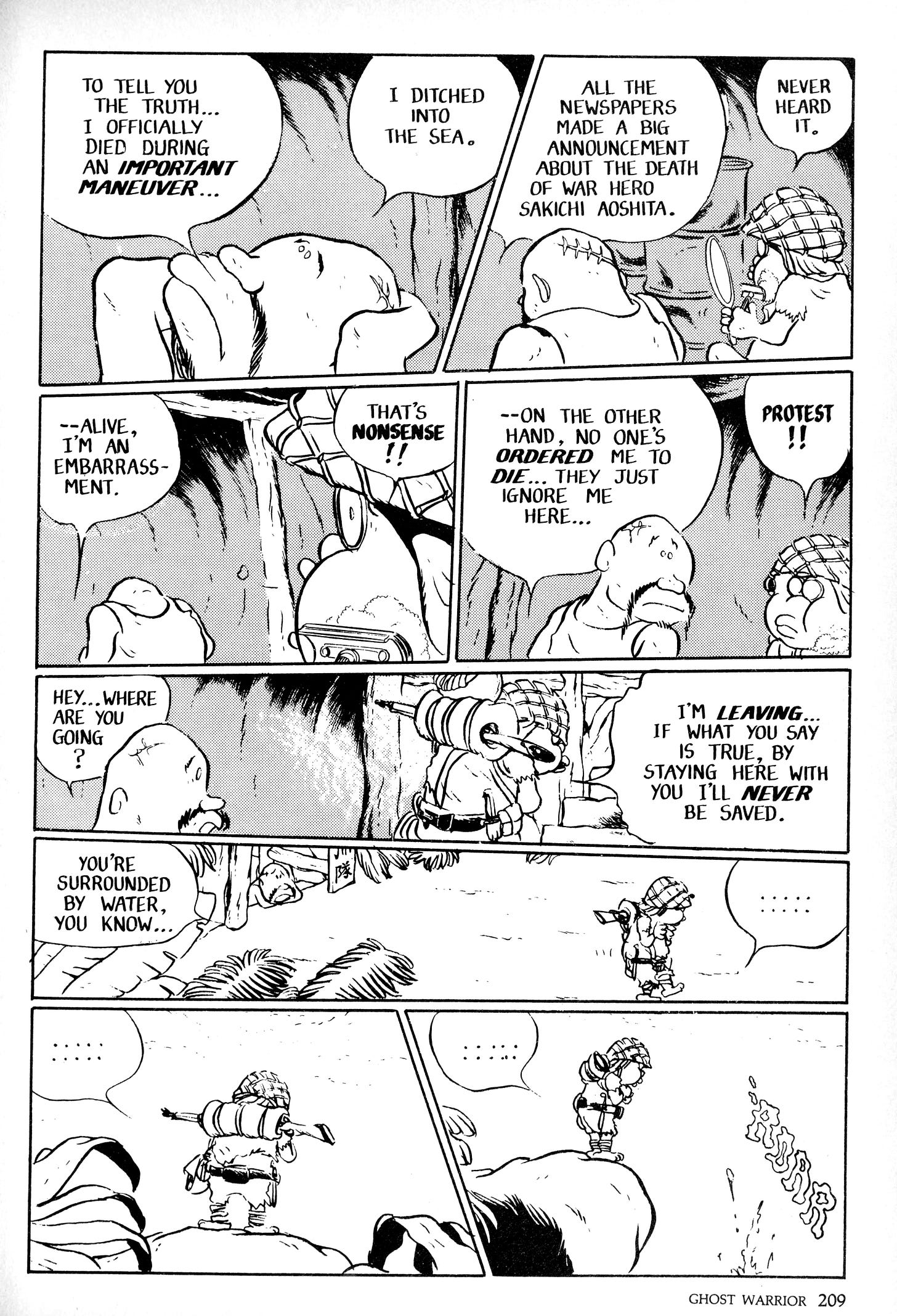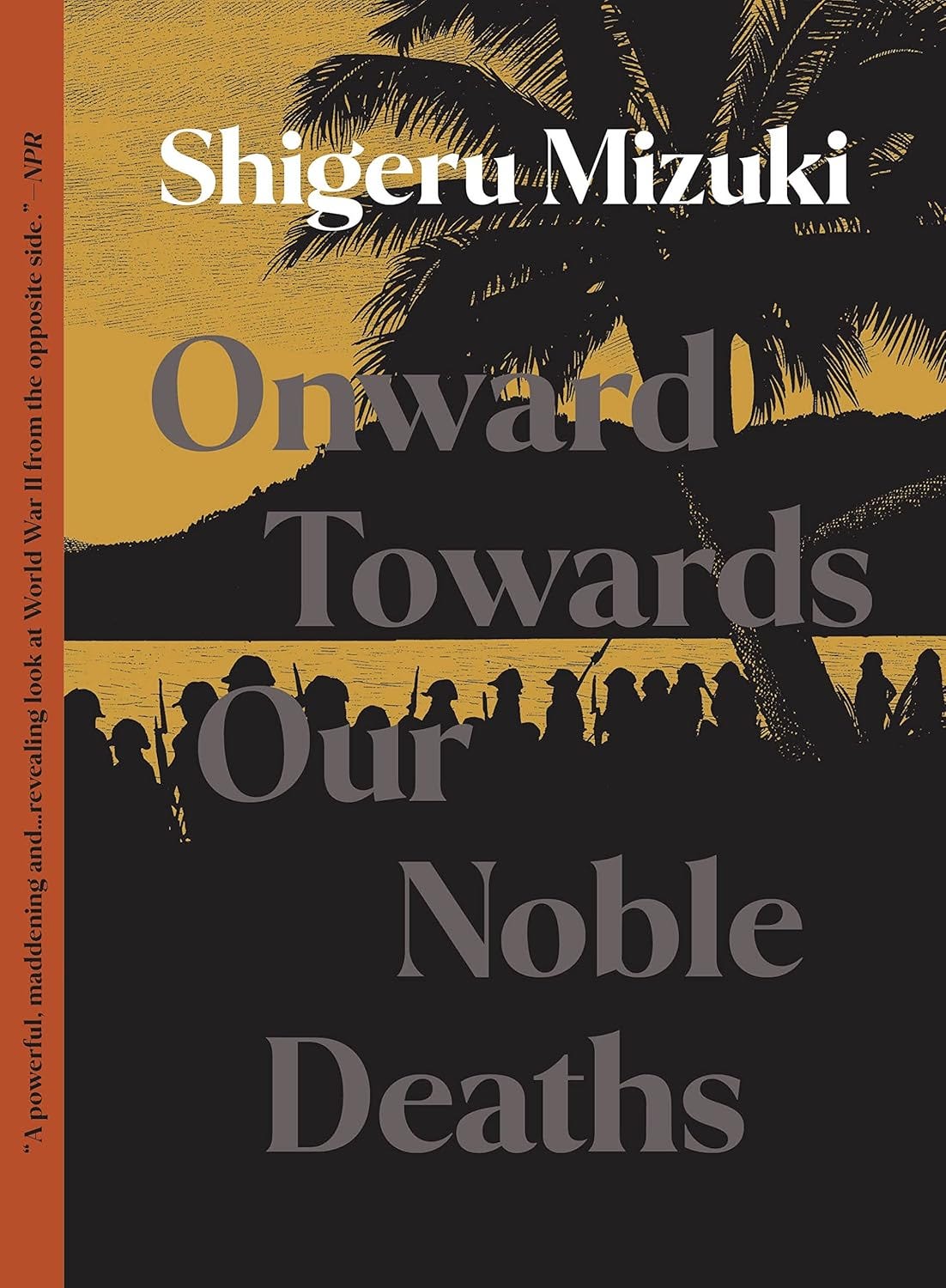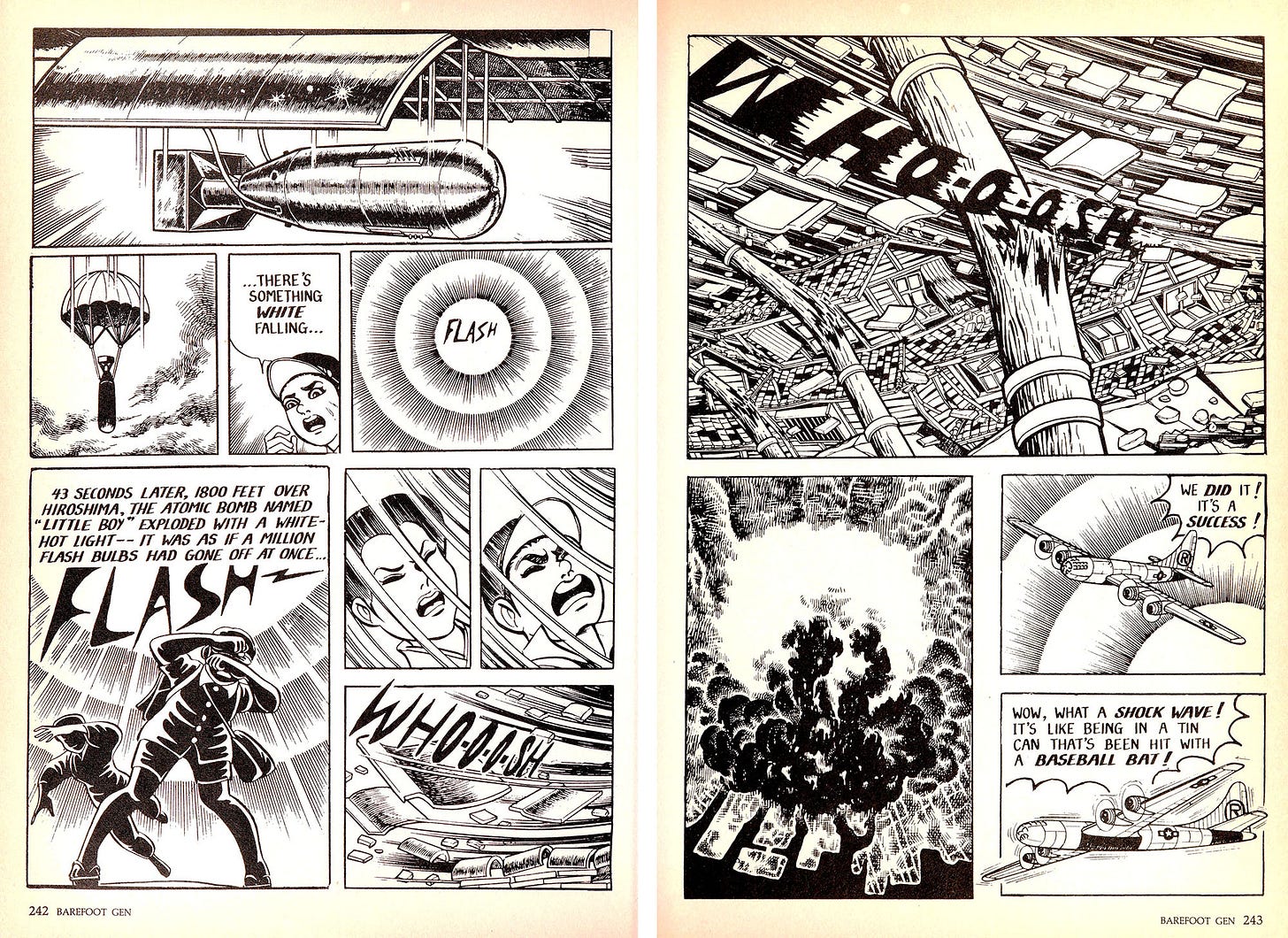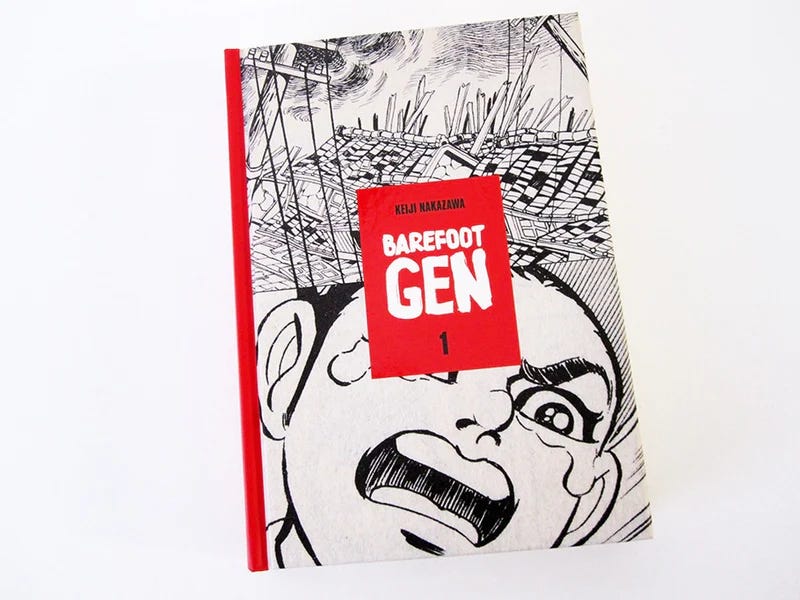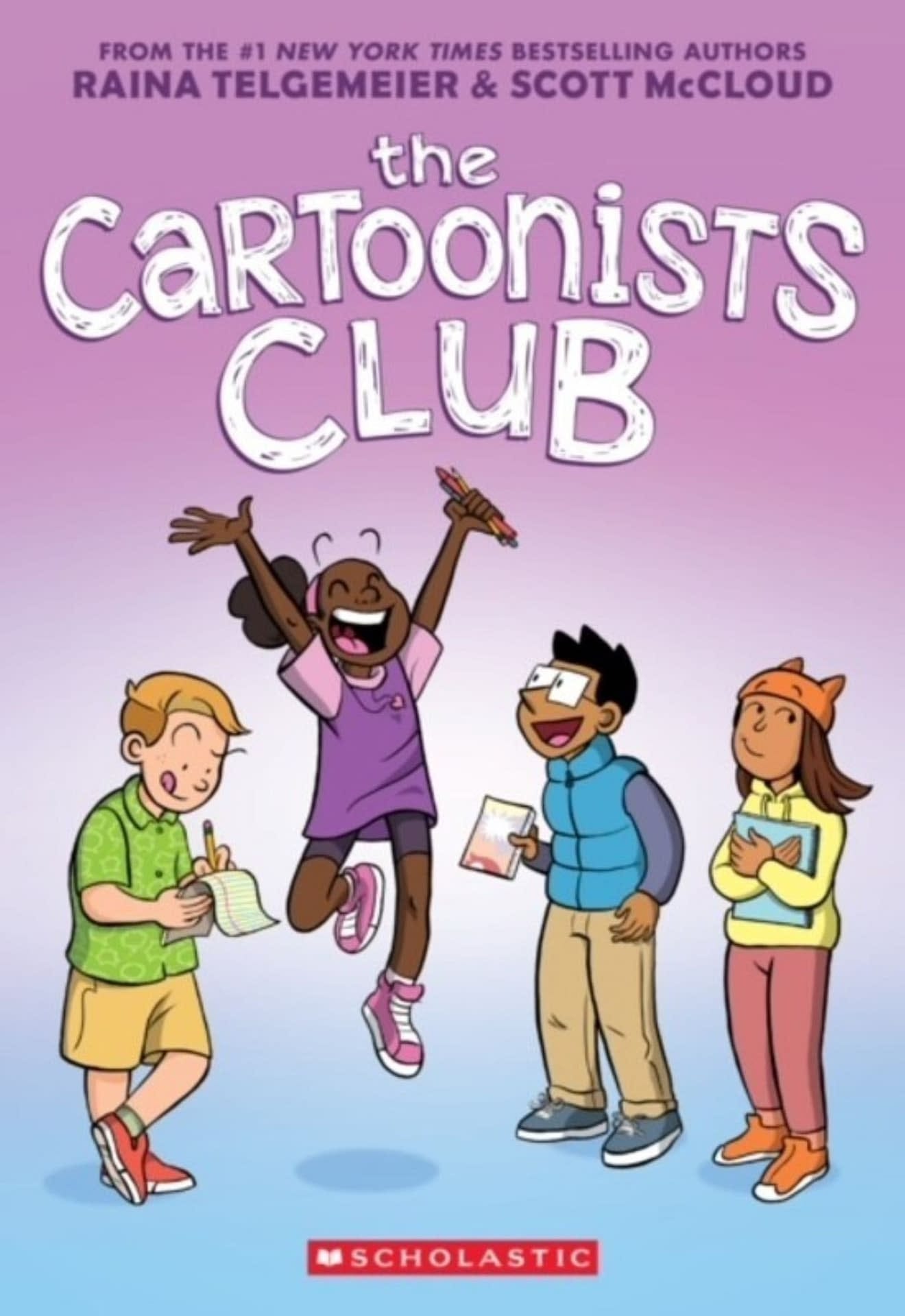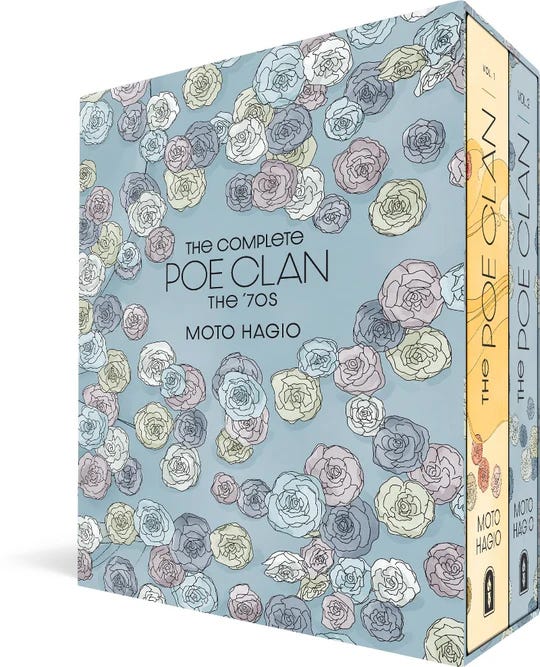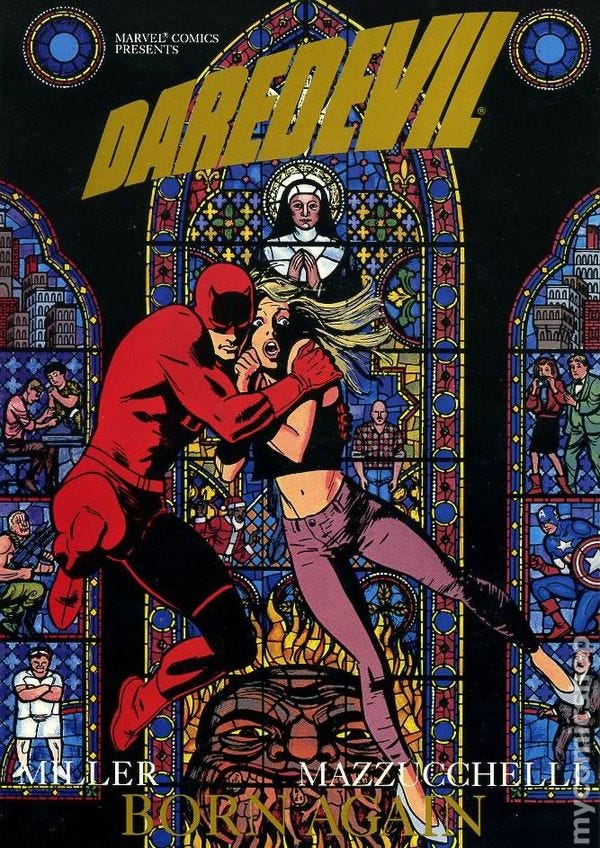Ep. 115: Manga! Manga! The World of Japanese Comics, by Frederik L. Schodt
Season 5, Episode 1! Welcome back y'all!
Welcome to Season 5 of Mangasplaining! We’re jumping right in on our new bi-weekly schedule with both our longest episode AND our first prose book: Manga! Manga! The World of Japanese Comics, by Frederik Schodt. It’s literally THE book on Manga for North America, or at least it was when first published back in 1988… Does this incredible tome hold up, or is the industry in North America, not to mention Japan, just too different here in 2024? Listen to find out!
Listen and Subscribe to the Podcast:
Youtube | Apple | Stitcher | RedCircle | Amazon | Radio Public | PocketCast | Spotify
Manga! Manga! The World of Japanese Comics
Written by Frederik L. Schodt
Featuring manga:
Phoenix by Osamu Tezuka (translated by Dadakai)
Ghost Warrior by Leiji Matsumoto (trans. Dadakai)
The Rose of Versailles by Riyoko Ikeda (trans. Frederik L. Schodt)
Barefood Gen by Keiji Nakazawa (trans. by Project Gen)
*Dadakai is a group comprised of Schodt, Shinji Sakamoto, and Jared Cook
Published by Kodansha (yes, it’s still in print!). Available in print only.
Audio editing by David Brothers. Show notes by Christopher Woodrow-Butcher and Deb Aoki
ABOUT MANGA! MANGA!
Since first published in 1983, Manga! Manga! The World of Japanese Comics has been the book to read for all those interested in Japanese comics. It is virtually the “bible” from which all studies and appreciation of manga begins. More than that, given the influence of Japanese manga on animation and on American-produced comics as well, Manga! Manga! provides the background against which these other arts can be understood. The book includes 96 pages from Osamu Tezuka’s Phoenix, Reiji Matsumoto’s Ghost Warrior, Riyoko Ikeda’s The Rose of Versailles, and Keiji Nakazawa’s Barefoot Gen.
“… a thoroughgoing exposition of the manga genre in text and pictures.” —The New Yorker
“An excellent historical guide to manga, as well as a fine Introduction to various artists and major thematic concerns.” —Variety
ABOUT FREDERICK L. SCHODT
Frederik L. Schodt (“Fred”) is an author of numerous non-fiction books on the convergence of Japanese and North American cultures, with subjects ranging from technology to history and religion, but he is especially known for his manga-related writings and translations.
He began seriously reading manga in 1970 while a student at a university in Tokyo. With some similar-minded friends, in 1977 he began doing pioneering manga translation work. The difficulty of getting anything published led him in 1983 to writing the first book about manga in English.
Still in print today and read widely by both fans and scholars, Manga! Manga! The World of Japanese Comics (Kodansha) introduced non-Japanese to a vibrant new visual culture. Fred has subsequently written widely about manga, in both articles and books, and he has also worked on translations of noted artists such as Osamu Tezuka, Riyoko Ikeda, Leiji Matsumoto, Keiji Nakazawa, Masamune Shirow, Yukinobu Hoshino, Naoki Urasawa, Hayao Miyazaki, and the pioneering 1931 work of the Japanese immigrant artist, Henry Kiyama.
He has also won numerous manga-related awards, including, in 2000, the Special Category of the Asahi Shimbun’s Osamu Tezuka Culture Prize; in 2009, the Special Category of the Japan International Manga Award; and, in 2022, the Tom Spurgeon Award at Cartoon Crossroads Columbus. In 2009, the Emperor of Japan granted him the Order of the Rising Sun, Gold Rays with Rosette, for helping to promote Japanese popular culture in North America. For the last ten years he has also served on the Executive Committee of the Foreign Ministry’s Japan International Manga Award.
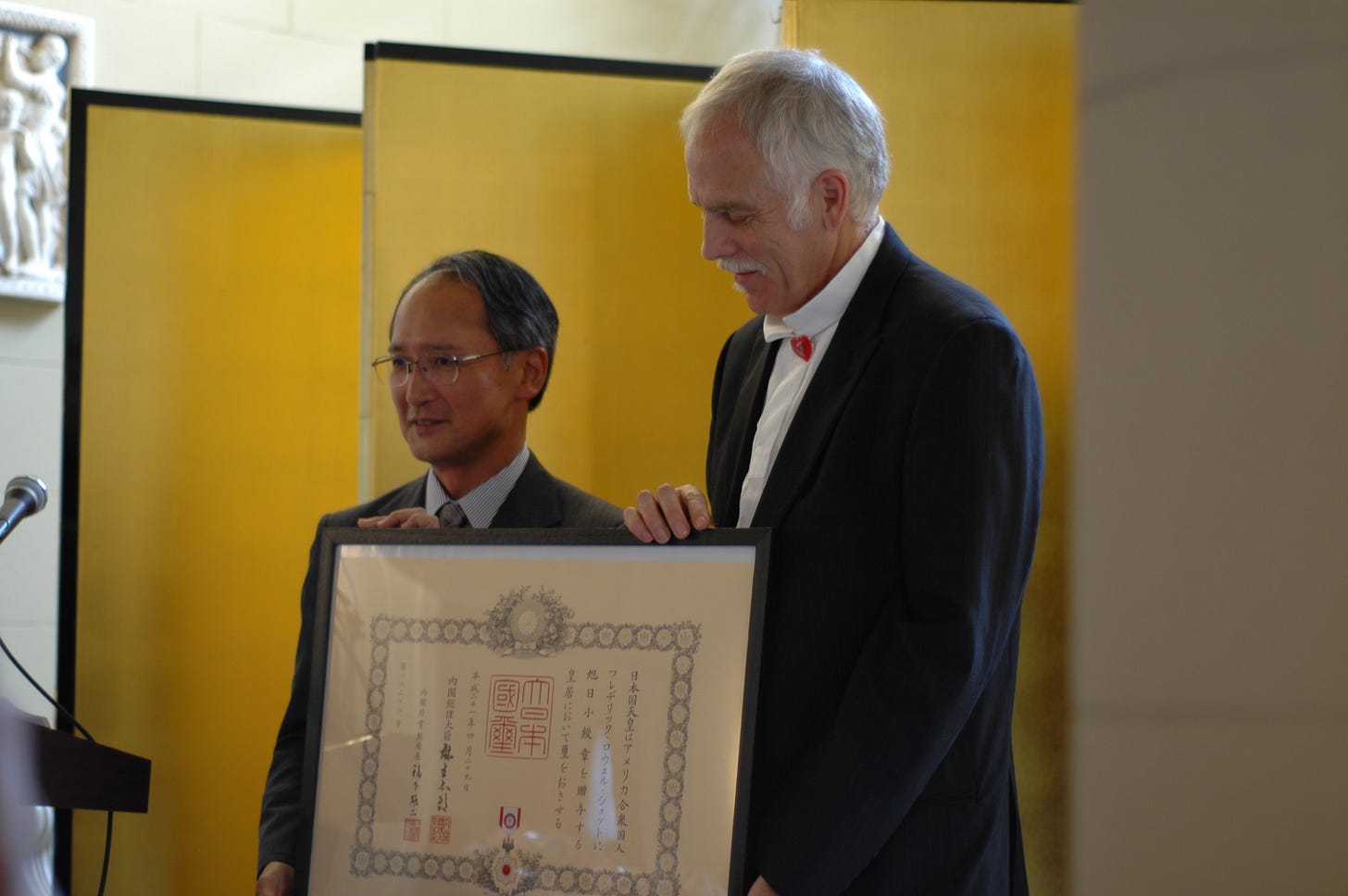
In 2024, Frederik L. Schodt was inaugural inductee into the Manga Publishing Hall of Fame at the new American Manga Awards, which was co-organized by our very own Deb Aoki!
You can find Frederik L. Schodt online at www.jai2.com
Before We Get Started
Hi all, Christopher here. Hope you’re well and happy to be back listening to Mangasplaining again! We took a much needed rest, and although I can honestly say we’re all still really, really busy, we’re also excited to be publishing episodes again. We’re also going to bi-weekly, as I mentioned a while back, so look for us in your fav podcast player every two weeks.
Speaking of busy, because we’re so, so, so far away from the present day during the recording of this episode (7 months) and it’ll be a while before we catch up, I wanted to give a special shout out to Time Waits, the new comic written by Chip and David for DISTILLRY, and illustrated by Marcus To! This is something that probably wouldn’t have happened if not for us making this podcast, and we’re really proud of them. Go check out issue one available now online and at better comic book stores.
Okay, let’s get into it.
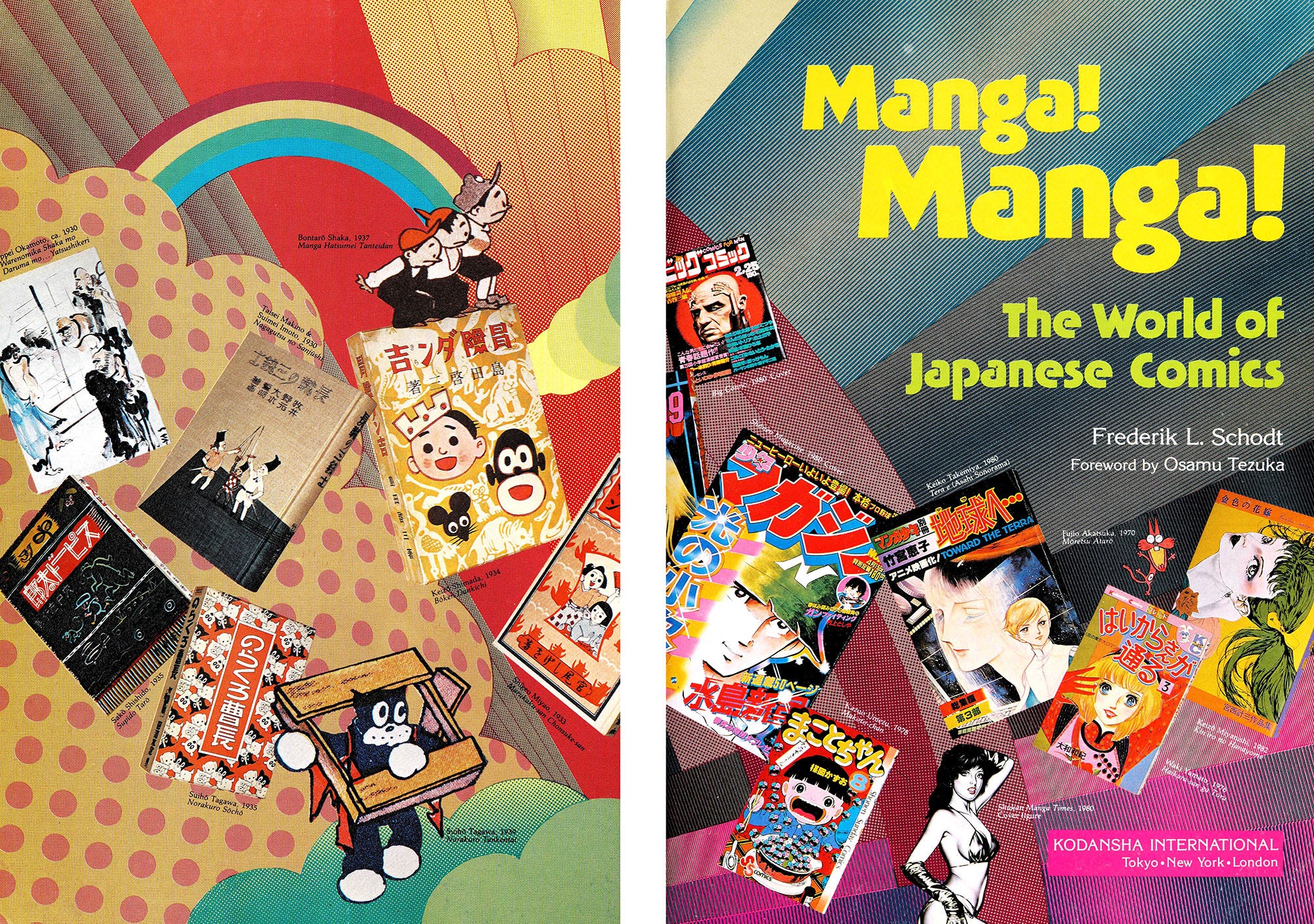
1:00 Actually, this is only Episode 115! I had plans for two additional bonus episodes to go after our interview with Robin Brenner, but they didn’t come to fruition. Maybe later though. So yeah, episode 115, and onward from here.
1:41 As mentioned up-top, this was recorded right around February 2024, after a big break for the holidays where we went to Japan and celebrated David’s Birthday. It was a nice time! Also, shout-out to David’s video game AMV situations:
2:32 Deb is teaching now! She’s teaching the class “Manga: History, Context and Creation” at the California College of the Arts. She talks a lot about work she’s doing in class on her X/Twitter account, @debaoki.
4:23 I’d like to say that Chip gave Mangasplaining a house ad in one of his Image books, but to my knowledge that hasn’t happened yet. But then, I live two thousand kilometers from a comic book store, so even if he did, I wouldn’t know. Someone might tag it on Twitter?
8:55 So it’s come to light that we did read two different versions of this book, with David reading the 1983 original and everyone else reading the 1997 update. Here’s what the original cover looked like:
As it says in the 1997 introduction though, there’s just a few additions (like the 1997 intro) and some material at the very end, the core of the book covering pre-war Japan, and the industry from the 1940s through the first few years of the 1980s, remains intact with some small editing. So, not a big deal to worry about.
10:30 As Rumiko Takahashi was one of the first creators we covered on the podcast, it was a little jarring to all of us that she isn’t mentioned literally at all in this book. Even Otomo gets sort of a cursory nod in the book’s final pages. Rumiko Takahashi, creator of Urusei Yatsura and Ranma 1/2 and Mermaid Saga, is a creator whose work was a breakthrough in North America, and their absence here points to a pretty interesting divergence in the American industry between what Schodt thought would be important and what struck a chord with international readers.
12:44 There’s a lot of ink spilled over “The Black and White Boom” of the 1980s, but I’ll attempt to summarize because it’s relevant to manga readers. Essentially, B&W comic books were considered third-rate in the 1980s, small press or fandom works, whereas full-color comics from DC and Marvel (and smaller pubs even) were the real deal. However, the break-through success of the self-published Teenage Mutant Ninja Turtles by Peter Laird and Kevin Eastman in 1986, itself a black and white book, opened the market to more self-published black and white books with retailers ordering them hoping to capitalize on what might be the “Next TMNT.” (The emergence and growth of the Direct Market, meaning distributors selling comics directly to stores instead of going through newsstand agents, also played a pivotal role here but that’s an even bigger subject.)
Several publishers of manga started or benefited from this “boom” in black and white comics, and the publication of manga in single-issues in North America was seen to be viable, finally, because of it. It’s how we got a lot of early serialized titles, like Lone Wolf & Cub, Area 88, Mai The Psychic Girl, Legend of Kamui, all thanks to the B&W boom filling coffers and driving a hunger for new material. Of course, a lot of TERRIBLE comics were published during this time too, and the boom busted, but manga comic books stuck around and continued to be their own weird little niche, particularly as VIZ stopped distributing/publishing through Eclipse and Dark Horse and Marvel/Epic started publishing directly too, into the late 1980s and early 1990s.
14:10 Deathmate? Warriors of Plasm? The 1990s were full of massive project launches that crashed and burned, severely damaging the industry due to retailers buying thousands of unsellable comics. I wish I could find the post about a store in the States that ordered so many of these comics that remained completely unsold that they basically stacked the boxes and built a wall along the back of the store, and then covered it with racking. I think blogger Mike Sterling (Progressive Ruin) is probably the greatest repository of Deathmate crossover information, and continued writing about 1990s comics mishaps.
If you can’t tell, I miss the glory days of blogging, and these show notes are kind of my attempt to recapture that. FYI.
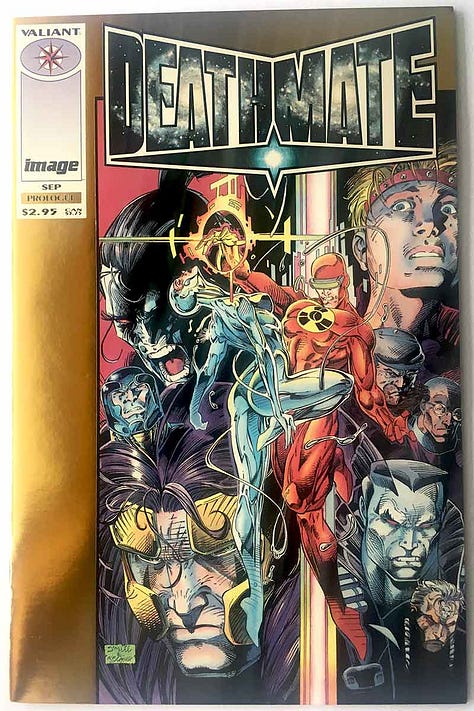
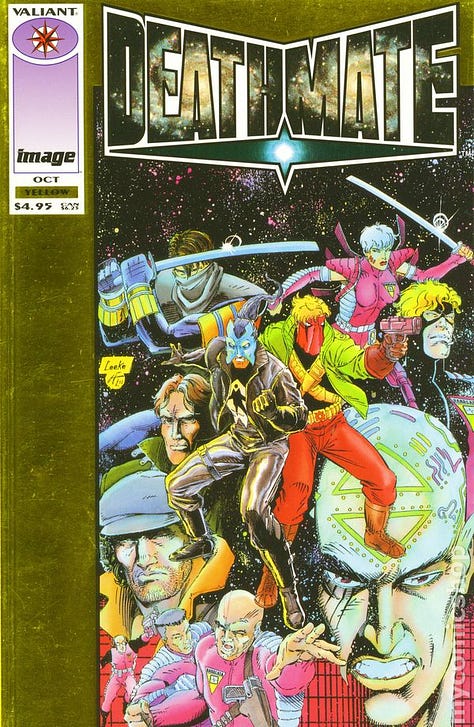
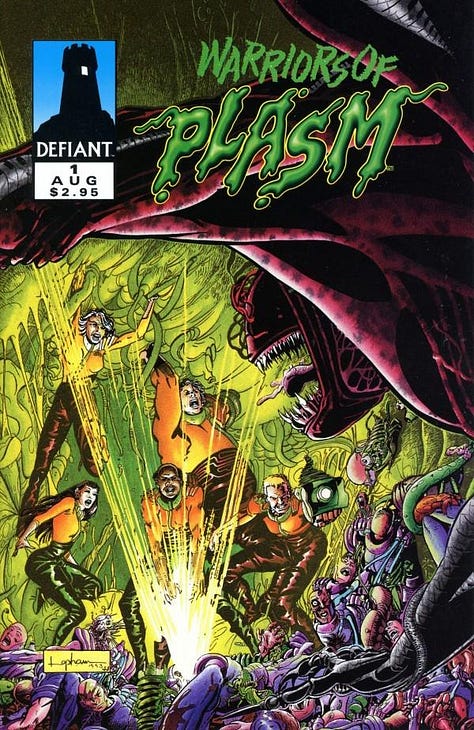
15:54 So the “Nurse Novel” thing is something writer Warren Ellis used to mention, but I think less known and more clear is Scott McCloud talking about genre and popularly of comics in his second book, Reinventing Comics. That title wasn’t as well-received as his first book Understanding Comics, because, in my humble opinion, it had a lot of sharp opinions in it on all aspects of the comics industry, making it difficult for anyone to endorse in its entirety, especially for political reasons. McCloud was one of the founders of the comic creators bill of rights after all, and a lot of creators to this day don’t like speaking up about the fact that they should wholly own what they wholly create in for superhero publishers, and certainly be compensated a hell of a lot better when those creations are used as the basis for movies and television…
But I digress.
These three pages from Reinventing Comics get to the heart of the matter of what it was like trying to sell anything that wasn’t a superhero comic book through direct market comic book stores in the late 1990s and early 2000s. Click to enlarge.
Reinventing Comics is still in print and really worth a read. I think the industry (and the medium) have changed as much since this book was written in 2000 and now, 24 years later, but some things remain depressingly similar. Some of it got things flat-out-wrong, too, which is interesting in its own way. If you can’t spring for a copy, it’s also available to borrow from Archive.org.
20:34 Manga wasn’t a word!
It’s wild that manga didn’t mean anything in 1983 to almost anyone in North America, except for the most nerdy of comic book fans (and creators!). It reminds me of a video I came across on the internet, where like an 1980s news broadcast is trying to explain what sushi is and why it’s so hot in L.A. Lol.
Anyway, here’s another video I found about the history of sushi in L.A. that I enjoyed.
25:00 Deb was talking about this book, Manga, produced with the British Museum and edited by Nicole Rousmaniere and Ryoko Matsuba.
33:23 David mentions off-hand that Katsuhiro Otomo (AKIRA) and Moebius (Airtight Garage) were fans of each other and exchanged illustrations.
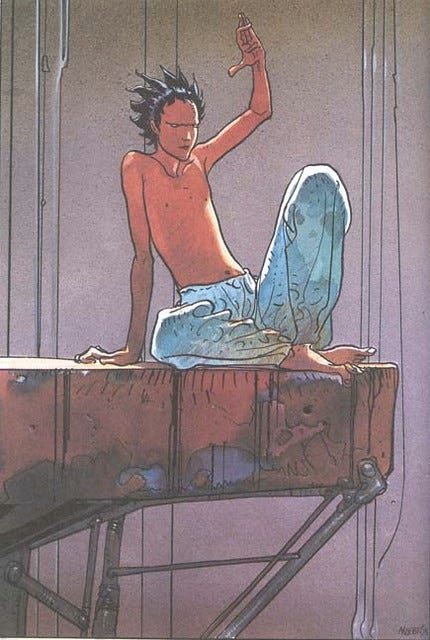
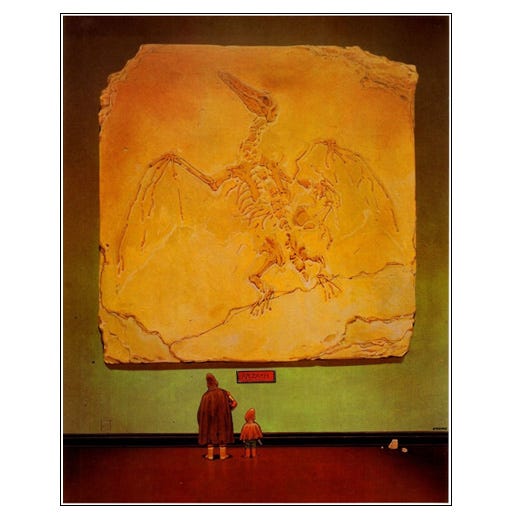
36:32 On the influence of American comics on manga, particularly pre-war and war-time American comics, I think it’s fair to say that it’s largely Western scholars like Schodt in this book and Ryan Holmberg in some of his published articles (two of which are at The Comics Journal online) that are interested in these connections.
Deb and I have been to a lot of ‘history of manga’ exhibits, and the popularly if American comics during the war and their influence is either a footnote or unmentioned. This echoes some of Holmberg’s writings (on Instagram probably?) that Japanese manga scholars are, at best, disinterested in the idea and occasionally hostile.
I’d recommend starting with this article in which Holmberg seems hurt by a response to his work in Japan, and helpfully links his other work, and rebuts the rebuttal.
45:00 The store all the comic artists who visit Tokyo NEED to visit? Sekaido, in Shinjuku, Tokyo. Rather than a fancy stationary store, which many folks love to visit (Itoya in Ginza is nice), Sekaido is a die-hard art supply store with how-to books, illustration and painting supplies, and of course, zipatone/letraset sheets, which add those dots and speed lines (and more) to manga pages.
How much screen tone is available at this store?
46:00 That episode is Kyoko Okazaki’s Helter Skelter:
46:10 For those looking to create their own comics, the program that Chip mentions is Clip Studio Paint, a tablet-drawing software (also works with mouse) that is one of the preferred programs for artists working digitally. Lots more features for comic and manga creators than anything in the Adobe suite, and available for a one-time-purchase. Like, not an advertisement, but also, they’re welcome to reach out and sponsor us.
46:28 The baseball images we talk about for the next few minutes are this double-page spread and then this full-page excerpt from Star of the Giants, Ikki Kajiwara and illustrated by Noboru Kawasaki between 1966 and 1971.
Star of the Giants is probably the most important baseball manga of all time, and invented a lot of shonen concepts and manga vocabulary used today (even if it did borrow from film and photography). There’s a reason why Even a Monkey Can Draw Manga’s chapter on shonen manga made fun of this first and foremost.
48:00 There’s some good stuff in here to do with Ashita No Joe, but we’ll get to that on the Ashita no Joe episode… Eventually. :)
52:00 The 150 people who would read Tiger Mask would really enjoy it.
53:50 Probably the biggest manga in Japan that is completely invisible outside of Japan is Sazae-san, a multi-media empire about a good-hearted housewife and the gentle adventures in her everyday life. With more than 68 volumes of comic strips created by Machiko Hasegawa between 1946 and 1974, this is a rare example of a classic manga that does have an English edition, albeit a Kodansha Billingual Manga English edition, sort of like Kosaku Shima.
More over, there is Sazae-san anime (still running!) and even more important, a Machiko Hasegawa Memoria Museum, AND a Machiko Hasegawa Museum of Art, both in Tokyo! Hard to explain just how engrained in the culture Sazae-san is.
55:46 Deb’s “amuse bouche” metaphor is actually awesome, here. Just enough to pique your curiosity and get you to go buy a full volume.
1:01:00 Shout out to SPX/Small Press Expo’s partnership with the Library of Congress to preserve the comics produced for SPX! Very cool.
1:03:22 The dirty books chapter is really good, actually. Like Deb and David I found it shocking and tittilating as a younger reader, but now I appreciate the recommendations for works we will absolutely never get in English, because they tend to turn up cheap in a lot of used manga shops. Here’s one of the images that Deb loved from this chapter:
DEB: I don’t know if “loved,” is the right way to describe my reaction to this shot, but it’s certainly a memorable image!
“This chapter felt… dangerous reading it as a kid.”
David Brothers, Mangasplaining
1:11:00 Here I mention the student movement in Japan, which I think I’ve covered in the podcast show notes before. But I’m trying to take less time to do these (work life balance, quality of life, etc.) so let’s just say “That’s too big a subject for these show notes.” Instead, see if you can track down Yoshihiro Tatsumi’s A Drifting Life, published by Drawn & Quarterly though seemingly between printings.
1:14:30 The Carl Barks YouTube video that Chip mentions is this one by mattt, “The hunt for the anonymous cartoonist who transformed pop culture.” It even starts off with a Tezuka anecdote!
…and that Phoenix episode of Mangasplaining is here. It’s very funny.
1:17:00 Leiji Matsumoto is a hugely influential creator, best-known to North Americans because of his animation, for Galaxy Express, Captain Harlock, and of course, DAFT PUNK.
Leiji Matsumoto though was a dual-threat (at least), with his comics being tremendously popular and influential in both science fiction and wartime milieu, with but with only his war comics having been translated. We’ll show a page from the book here because Deb is talking about the lettering being rough, and although the letterers are uncredited, I’m pretty sure it’s Schodt and his friends.
1:21:00 This story, Ghost Warrior, touches on some of the same themes as a book that Schodt mentions in its introduction, that being Shigeru Mizuki’s Onwards Towards Our Noble Deaths. Published in English and translated by Jocelyne Allen, this Eisner-award winning graphic novel is very, very good, and a very emotionally difficult read. Absolutely worth your time and energy to track down.
1:22:00 You DID catch our episode about The Rose of Versailles, didn’t you?
I mentioned that these pages looked a little lighter on detail or refinement than the UDON version. We found the pages and compared them here, and… they’re the same! It’s honestly just print quality.
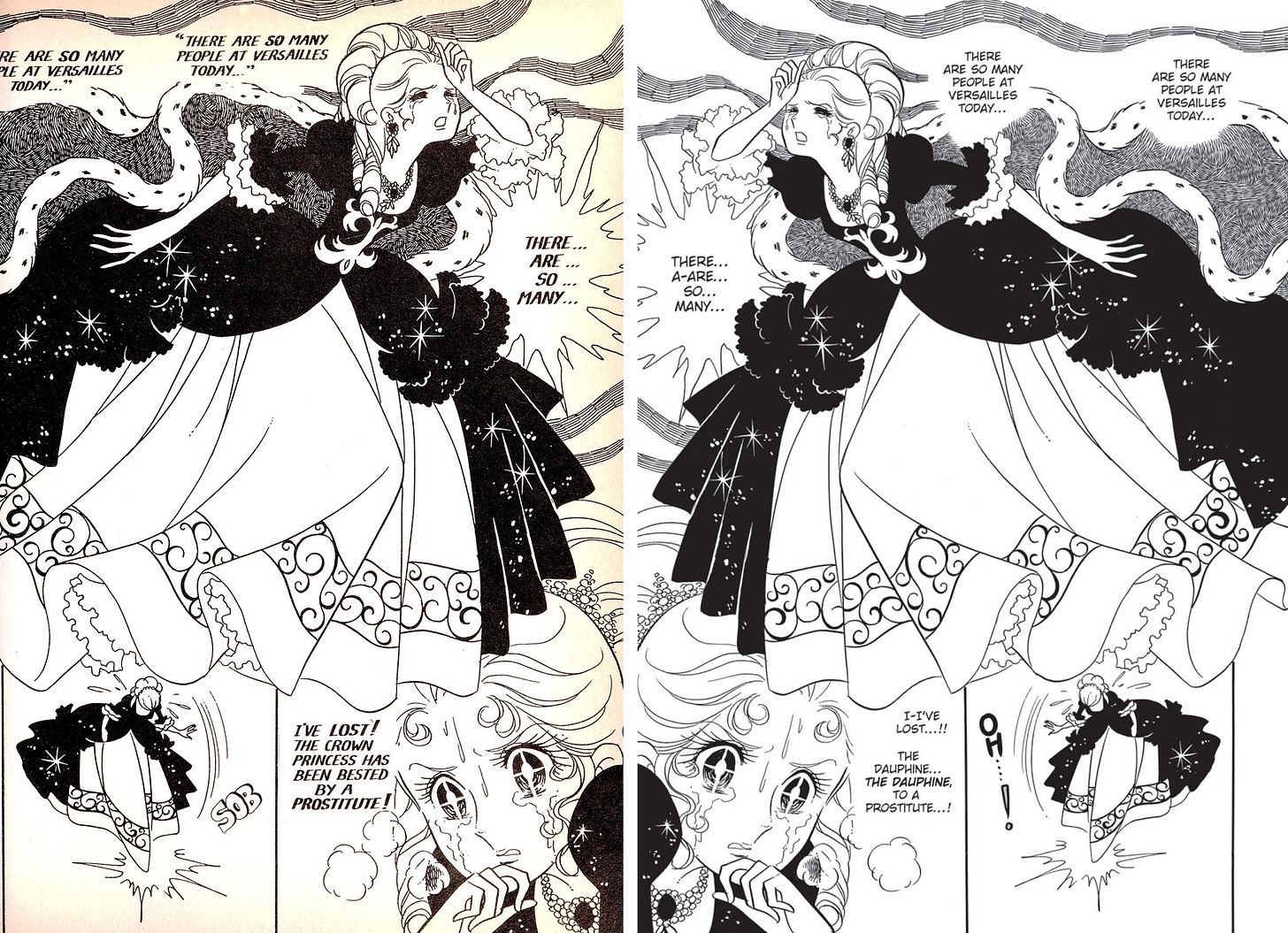
1:26:00 The two big pieces of popular culture dealing with the Hiroshima bombings during WWII that made their way from France to North America were the manga we are discussing, Barefoot Gen by Keiji Nakazawa, and the film Grave of the Fireflies, directed by Isao Takahata and released by Studio Ghibli. They’re both harrowing works.
DEB: Grave of the Fireflies is now available to watch on Netflix in N. America, and while it’s an important film, viewers must go in prepared to watch a movie that’s essentially about war and how it affects the lives of two children in the last days of WWII in Japan.
David and Chip talk about the pivotal moment in the excerpt from Barefoot Gen, pages 242-243, the explosion of the bomb.
Roof tiles flying, the utility pole being sheared in half, the wind, the shockwave, the number of panels and the narration — a LOT is happening in these two pages alone. Chip is right, a contemporary retelling would never show this moment this way, but this explosion in individual seconds (moment-to-moment transitions) is really powerful, trying to show you just how fast everything happened.
1:28:00 It’s true! Barefoot Gen started its serialization in Weekly Shonen Jump, but as the series progressed and became more mature and complex, it ended up bouncing between a number of magazines from other publishers.
The publisher in North America, though, is Last Gasp, and while it looks like volume 1 is temporary out of stock at their website, it is available from other sources! And as Deb mentions, Last Gasp is also the publisher of the one-shot comic book I Saw It, an abridged retelling of volume 1 of Barefoot Gen intended to educate American kids, and also a short text biography, I Can’t Forget the Bomb.
1:29:00 I think we’ve linked it before, but kids-comics superstar Raina Telegemeier made a comic about Barefoot Gen that was widely shared and archived on her website, that’s really good. I just went to check and it’s no longer on her site, which may be good news for folks looking for a longer meditation on Barefoot Gen from Raina coming down the road. That said, I did see that the comic was reprinted here, and you can still read it for now.
Bringing the discussion full circle, the next book from Raina Telgemeier is actually a collaboration with none other than Scott McCloud.
DEB: The Cartoonists Club started out as Understanding Comics for kids, but turned into more of a narrative about kids learning how to draw comics. It’s still a great “you too can make comics” book that everyone should pick up. Scholastic Graphix has it scheduled for release in April 2025.
1:30:00 We’re really sorry about the audio quality here, Deb keeps cutting out due to her mic set-up, any time she turns her head, and the audio just wasn’t recorded for some of her stuff. It gets better as the season goes on.
1:32:00 Push-back against Barefoot Gen in Japan continues. For the first wave of removals, you can read this article at the CBLDF that talks about the removal. Most recently in 2013. Most recently, images from Barefoot Gen are being removed from a textbook because they’re no longer culturally relevant, which is very interesting.
Luckily, Barefoot Gen is still available and recommended at the gift shop and in some of the exhibits at the Hiroshima Peace Memorial Museum.
1:34:30 And now it’s time for Final Thoughts:
DAVID’s in the details with a tongue-in-cheek dig at the book for how one of his favorites is being treated, namely a panel from Lupin the 3rd by MonkeyPunch. But he definitely liked the book despite it being a very long read.
DEB mentioned that Manga! Manga! was one of the biggest and most influential books on her career, and re-reading it with all the knowledge she’s gained since last she read it continues to illuminate. But laments that there’s still so many manga classics in Japan that are unavailable in English.
CHIP liked it, despite it being all text. The section about how the industry is just barrels of money being given to manga creators was depressing, but fascinating. Can’t wait to see this scene in Public Domain. Also Chip makes a comic called Public Domain: Check it out. Also he gifted us with this quote:
“Jim Davis is the Osamu Tezuka of North America.”
- Chip Zdarsky
CHRIS’ final thoughts: Manga! Manga! is an important part of North American manga, the box that holds all the puzzle pieces for those looking to complete their picture of manga publishing. At a certain point in time. Read it!
1:40:30 - THE BREAK
David shouts-out the aid agency Doctors Without Borders / medecins sans frontieres. Donate now at Doctorswithoutborders.org.
Chip shouts-out the new television series Mr. and Mrs. Smith on Amazon.
Deb shouts-out Moto Hagio’s The Poe Clan, published by Fantagraphics. It’s complete in two volumes, and part of the fascinating Moto Hagio library they’ve been building over there. You should definitely check it out. There’s even a handy oversized box set coming this fall!
Christopher shouts-out the audience, Happy Lunar New Year.
But David and Chip team up to steal his shout-out with Curb Your Enthusiasm.
NEXT TIME ON MANGASPLAINING:
We’re reading Daredevil: Born Again by Frank Miller and David Mazzuchelli, published by Marvel Comics. Yes, seriously. Also remember that starting this season we’re going bi-weekly, so we’ll see you in two weeks!
And that’s this week in Mangasplaining! This episode is also available wherever you get your podcasts, so please subscribe and leave a review, so others can discover our show.
Thanks so much for listening! Please support your local comic and manga specialty shop when purchasing these books, and you can find one near you at comicshoplocator.com. You can also check your local library for print and digital lending options, they have TONS of manga! Finally, thanks to D.A.D.S. for their musical accompaniment for this episode.
Instead of music this week, here’s a little MORE Mangasplaining, or rather, Mangasplaining-adjacent content, for you. This is David’s new occasional video essay series, No Relation, with the first episode about “The Art of Storytelling” with cartoonist and pal Alissa Sallah. Banana Fish, Moto Hagio, Berserk, and so much more.

